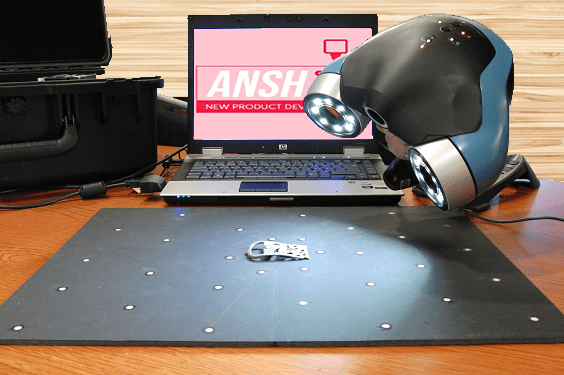
Exploring the Benefits and Applications of Contact Scanning 3D Scanning Method
When it comes to 3D scanning, there are a variety of methods available, each with their own strengths and drawbacks. One method that has gained popularity in recent years is contact scanning, also known as touch-probe scanning. This method involves using a stylus or probe to physically touch the object being scanned, allowing for high levels of accuracy and detail. In this article, we’ll explore contact scanning in detail, including how it works, its benefits, and some common applications.
How Contact Scanning Works
Contact scanning involves physically touching the object being scanned with a stylus or probe. The probe is typically mounted on a robotic arm that can move around the object, allowing for the collection of data from multiple angles. As the probe touches the surface of the object, it sends signals back to a computer, which uses these signals to create a digital 3D model of the object.
Contact scanning can be done in two ways: single-point probing and scanning with a continuous scanning probe. Single-point probing involves taking measurements at specific points on the object’s surface, while a continuous scanning probe collects data continuously as it moves over the surface of the object. Continuous scanning is generally faster than single-point probing, but requires a more sophisticated setup.
Benefits of Contact Scanning
One of the primary benefits of contact scanning is its high level of accuracy. Because the probe physically touches the object, it can capture even very small details with great precision. This makes contact scanning an ideal choice for applications where accuracy is critical, such as in medicine or aerospace engineering.
Another benefit of contact scanning is that it can be used to scan almost any type of object, from complex mechanical parts to organic shapes like human body parts. This versatility makes it a popular choice across a wide range of industries.
Applications of Contact Scanning
Contact scanning finds applications in a number of fields including manufacturing, engineering, quality control, reverse engineering, and art preservation. Here are some common examples:
- Manufacturing: Contact scanning is often used in manufacturing to produce precise measurements of parts and components. This information can then be used to ensure that products meet design specifications and to identify any defects or quality issues.
- Engineering: In engineering applications, contact scanning is used to create 3D models of parts and assemblies for design and analysis purposes. These models can then be used to simulate the behavior of the part under different conditions, such as stress or temperature changes.
- Quality Control: Contact scanning is also used in quality control to verify that parts meet specific tolerances and dimensions. By comparing the scanned data to the design specifications, manufacturers can ensure that their products meet high levels of quality.
- Reverse Engineering: Contact scanning can also be used for reverse engineering, which involves creating a digital model of an existing object. This can be useful for recreating a part that is no longer manufactured or for identifying the root cause of a problem.
- Art Preservation: Finally, contact scanning is sometimes used in the preservation of artwork and other cultural artifacts. By creating a digital model of the object, curators can study it in detail without risking damage to the original.
Conclusion
Contact scanning is a powerful 3D scanning method that offers high levels of accuracy and versatility. Its ability to capture even small details makes it an ideal choice for applications where precision is critical, such as in medicine or aerospace engineering. With its wide range of applications, contact scanning is expected to continue playing an important role in many industries for years to come.





